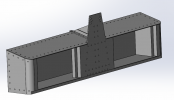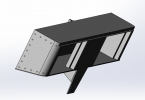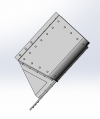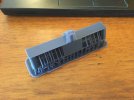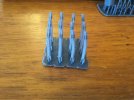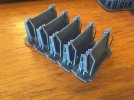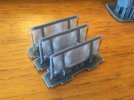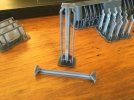Peter,
Unless your budget is extremely tight, I would choose one of the Mars 3 versions over the Mars 2 every time. The specs are just better in every way really. The reality is that even a new Mars 3 is ridiculously cheap at the moment, with the Pro at $285 to the UK and the Ultra at only $220 (sadly sold out here in the US but still available in the UK).
I second most of what Simon has mentioned, except that I wouldn't worry about the FEP sheet. It's a consumerable, relatively inexpensive, and relatively easy to change. The other line items are more critical, certainly you want all the hardware to be in good form.
I also wouldn't necessarily expect a wash & cure station to be included, unless the sale price was unusually high. If getting both, I would expect the total cost to be about 1½ times as much as the printer alone.
Last note, there are effectively 3 "phases" of Mars 3 printers. The Ultra is the first iteration of Mars 3, and there are an early and late version of those. The earlier version can be identified by a square cap on the top of the Z axis column.
View attachment 185599
The late Mars 3 Ultra has a beefed up Z axis column, I presume it was modified to deal with the "Z axis wobble" issue that was common with the early units. The late version can be identified by a "D" shaped column cap, and flanges seem deeper in the Y direction.
View attachment 185601
The later version also featured an "improved" vat design with a pouring spout on one corner. I don't think much of it though, I find pouring resin out of the vat with or without the spout makes a mess either way.
The last version is the Mars 3 Pro. It has some upgraded features, slightly bigger screen, better glass protecting the screen. I think it's supposed to have a better light array as well, and lastly include some charcoal filters for odor. I don't think the Pro looks much different from the later Ultra models, but apparently it says "Pro" on the front, so I would look for that to identify the latest version.
The point of all of the above is to help you know what you are getting, and maybe which one to choose if multiples are on offer. Setting aside price, I would first choose the Pro, than the late Ultra, then the early Ultra last. Of course price will play a factor though, but only you can balance that versus which unit you choose. I will say that I have both early and late Ultra's, and I am more than happy with the results from both machines. Often the prints are stunningly good. I can't say whether the upgraded specs on the Pro make any sort of difference, I've not used one nor heard feedback from somebody that has.
I guess the bottom line is I don't think you can go wrong with any of the Mars 3 printers. But if there is a big price difference between an available Pro versus Ultra, I would be strongly tempted to choose the Ultra. Put the extra cash toward a curing station or supplies like film or resin.
One other thing I forgot above, both of my Ultra's came with a free one year subscription to Chitubox Pro. You may or may not get that buying a unit second hand. It's not really a deal breaker, the regular Chitubox is certainly servicable, and other slicing options exist as well.
Hope that helps,
Jim
Thanks Jim for the further info.
I'll add it to my list of queries,
and thoughts to be taken into consideration...
Peter



